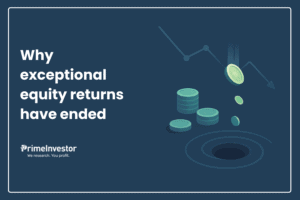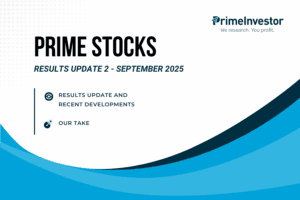As the stock indices defy gravity to soar past earlier highs, AMCs are back to using a time-tested ploy to manage their flows – rationing your investments.

Mirae Asset has just drastically slashed the monthly SIPs it will allow into its Mirae Asset Emerging Bluechip Fund from Rs 25000 to Rs 2500 from November 6. SIPs and STPs registered earlier will be allowed to continue, but new registrations will need to be capped at Rs 2500. The scheme had already put a stop to all lumpsum investments from October 2016 and capped its SIPs at Rs 25000 a month in November 2017. This is a rare instance of a large and mid-cap equity fund regulating inflows, but such rationing is a common practise with small-cap funds.
It was only on March 31 that SBI Mutual Fund decided to reopen its Smallcap Fund for lumpsum investments, after shutting them out for nearly five years. In September, barely five months later it decided to shut its doors to lumpsum investments again. It also decided to cap SIPs at Rs 5000 per investor.
DSP Smallcap Fund was among the first to gate flows into the scheme at Rs 2 lakh per investor in 2014. In 2017, it completely gated all inflows. In September 2018, it opened for limited SIPs. From April 1 2020, it has allowed lumpsum investments too.
Investor dilemma
While AMCs have many explanations for why such caps and quotas are for your own good, they trigger some valid queries from our readers. Here they are.
- A fund that I am regularly investing in, as a part of my child’s education goal, has restricted my SIPs. What I am supposed to do to meet that goal?
- A monthly SIP of Rs 2500 or Rs 5000 is too small to make a difference to my wealth, so what’s the point in continuing with this investment at all? Should I switch to my second-best or third-best choice? How will this help me?
- If the fund manager thinks that he can’t find attractive deployment opportunities in this market for my money, will my existing investments earn much lower returns? Should I redeem all my holdings in this fund?
However much AMCs may insist that they are trying to deliver a good investor experience, this start-stop approach to accepting flows inconveniences investors. Folks working towards goal-based portfolios using SIPs are forced to interrupt their investments and scout around for alternatives. Asset allocation plans and fund choices made painstakingly get disrupted. Those who have lumpsums to invest are forced to make sub-optimal choices for deploying that money.
Justifications
Fund houses come up with many convincing-sounding explanations on why rationing flows is for your own good.
A common one is that, as markets have soared, the fund manager is finding it difficult to unearth attractive deployment opportunities for the new money and would not like to dilute returns for existing investors.
A second is that the small-cap universe in India can only support a certain fund size, beyond which impact costs start to kick in and hurt fund performance.
A third is that, as the market as a whole or a specific market cap segment has become over-valued, the fund would like to warn off investors from chasing returns and risking capital losses.
But each of these arguments wears a little thin with repetition.
For one, it is not necessary for a fund manager to identify new stocks to buy every time his scheme receives new inflows. If he’s convinced about the merits of the stocks he already owns in his portfolio, all he needs to do is to add to existing positions without further ado.
If he believes that even this will be return-dilutive because they will not replicate their past returns, the ideal thing to do would be to communicate this clearly to investors so that they either tone down their expectations or book profits. Sending out subtle hints through restrictions on lumpsums or SIPs doesn’t really do the job.
But only problem is that this ‘ideal’ fund size seems to be a moving target and varies with AMCs.
Building significant positions in smaller stocks in India does entail impact costs. Therefore, the argument on the small-cap universe in India being able to support only a certain fund size rings true. But only problem is that this ‘ideal’ fund size seems to be a moving target and varies with AMCs. Barely five years ago, a Rs 2000 crore small cap fund was considered too unwieldy and AMCs imposed restrictions on flows well below this size. Lately, this threshold has moved to Rs 5,000 crore. It is also difficult to grasp why some fund houses deem a Rs 5,000 crore small-cap fund too big to handle, while others peg the breaking point at Rs 8,000 crore. Yet others are happy to accept flows whatever their size.
Let’s also not forget that rationing SIPs or barring lumpsums does not really prevent a small-cap fund from growing beyond what the fund manager deems a nice size. Sheer momentum in returns can bloat a small-cap fund too.
Impact costs for a small-cap fund are also a function of market conditions, while also being a structural issue that’s not going be resolved anytime soon. In a bull market, when dozens of long-ignored small-cap names come to miraculous life, liquidity picks up even in obscure names and impact costs fall. This however tends to be quite a bad time for long-term investors to enter small-cap funds. During a bearish spell, even high-quality small-cap names can face a sudden dearth of liquidity. Investing in such bearish spells can entail high impact costs but may prove favourable for long-term investors – which small-cap investors need to be.
The truth is that, if an AMC really believes that there’s a specific fund size beyond which any new inflows or expansion will dilute scheme returns, it ought to be completely gating its flows at that size. It must reopen only when and if the scheme gets back to the ideal size. Merely refusing lumpsums or curtailing SIPs sends out very mixed signals, as the investor may not like to earn sub-par returns even on Rs 2500 or Rs 5000 of his monthly investments.
Does timing work?
The third argument, about restricting flows because the market or a specific market-cap segment is over-valued, is the shakiest of the lot. Time and again, Indian AMC honchos tell investors that timing the market is a cardinal sin and that no one can second-guess market direction over the next week, next month or next year.
When AMCs try to tell investors when they should start or stop investments, they’re assuming that the investor doesn’t have an asset allocation plan or a financial goal in mind
Reams of investor awareness material is devoted to educating the investor on the merits of goal-based investing and sticking to a disciplined asset allocation plan irrespective of market conditions. But when AMCs try to tell investors when they should start or stop investments, they’re assuming that the investor doesn’t have an asset allocation plan or a financial goal in mind and is simply making an opportunistic bet on equities.
Let’s not forget that AMCs can also go quite wrong in such market timing efforts. The last three-four years, during which some schemes have completely barred lumpsum investments, have actually turned out to be pretty good periods for the Indian investor to buy into equities.
Many small-cap funds were closed for lumpsums and had restricted SIPs until March this year and began to re-open from April. But the best time to invest in small cap companies was in early March when the small-cap index bottomed. Clearly, what’s a great time to invest and what’s a poor time, is often evident only with the benefit of hindsight.
Bottomline
Instead of rationing flows at the investor’s end, it would be good if AMCs simply used better communication policies to convey their views on valuations to investors. If fund size is the problem, the best bet would be to completely gate all flows, or better still, book profits on stocks and return hard cash to investors even in the growth plans.
Instead of rationing flows at the investor’s end, it would be good if AMCs simply used better communication policies to convey their views on valuations to investors.
SEBI on its part should do away with its one-scheme-per-category rule and allow AMCs to gate old schemes and launch new ones in categories where fund size can pose a challenge to returns.
Until that happens, though, funds shuttering flows is a phenomenon that needs be lived with. So don’t read too much into such actions with respect to market levels or potential returns. The best you can do is to continue to stick to your planned asset-allocation and investing. If a fund you want to increase SIPs in won’t accept more flows, look for another alternative in the same risk-return frame that’s a good performer.
Also Read : SIP vs Lump sum







13 thoughts on “Should funds ration your investments?”
“SEBI on its part should do away with its one-scheme-per-category rule and allow AMCs to gate old schemes and launch new ones in categories where fund size can pose a challenge to returns.”
When you suggest that SEBI should allow more than 1 scheme in the same category, aren’t we going back to the time when AMCs had multiple schemes without real differences between those? Also, in the case of NFOs, it is not a good idea to invest without a track record, so how will it help investors?
In categories like smallcaps multiple schemes are necessary so that schemes beyond a certain size don’t accept flows. No harm in multiple funds in a category as long as managers and styles are different.
Dear Aartiji, Thank you for a good article. Can you clarify that if the fund has accepted a long term multi year SIP then would it able to stop it? I have started some SIPs recently across 5 to 15 years in some funds. Also, would request you to extend this article with action points/advice which Investors can do if they fall in such a situation as shared by you like stoppage of an existing SIP (Children’s Education) etc. Thank you!
If they’ve accepted a sip for a specified period it is not subject to the restrictions. But most ppl gace limited period sips that they renew and renewal does get affected. In such cases best to look for another fund with similar ratings and mandate
This could be one useful reason to move to a next50 index fund ? Or Index fund in general, right ?
AMC doesn’t have much to say in case of index funds.
Yes this can’t be the only reason to own index funds, but is one reason for sure.
Hello Aarthi – thanks for the detailed view on the recent changes. One question though is as an investor does it make sense to stop in progress SIPs in such funds and move to alternative one’s?
If the allowed SIPs are too small yes choose similarly rated funds with a similar mandate.
The AMCs restricting fresh inflows and existing SIPs is not stopped -please correct me ?
Goal based investment _if already in place- should not come in the way .
When the existing SIP is completed renewal too will be subject to caps, which is an issue. Very few ppl have perpetual SIPs.
Yes Madam, points – varying AUM sizes of SMALL CAPS by different AMCs well brought about. Second one, profit booking and distribute it to the existing investors, very well articulately argued upon. And the same small cap stocks are dealt with well in other nomenclature of the other segments say hypothetically Banking stocks, small banks stocks are heavily traded in the market, but the same in small cap segments, no trading take place.
Even though i agree with most part of the article, i have a different opinion on going away with one fund per category rule for few categories. Knowing the greed of AMC’s, they will just launch many funds,as they are doing in thematic space, which effects investor decision making and proper comparison.
For an investor, below are the things which can be beneficial IMO,
1) Each fund should define its maximum capacity AUM – i know some of the intellects suggesting this from some time, i don’t know why SEBI doesn’t implement these instead of creating or fiddling with categories
2) AMC should communicate atleast 2-3 months prior about their restriction on flows for investors to take action.
Very well described. Super liked it
Comments are closed.